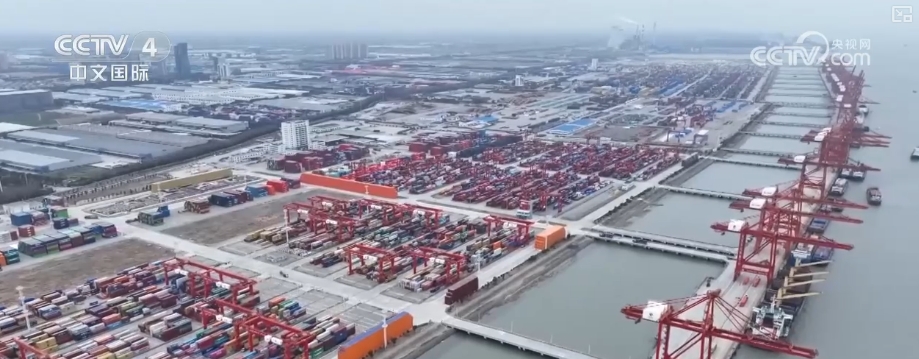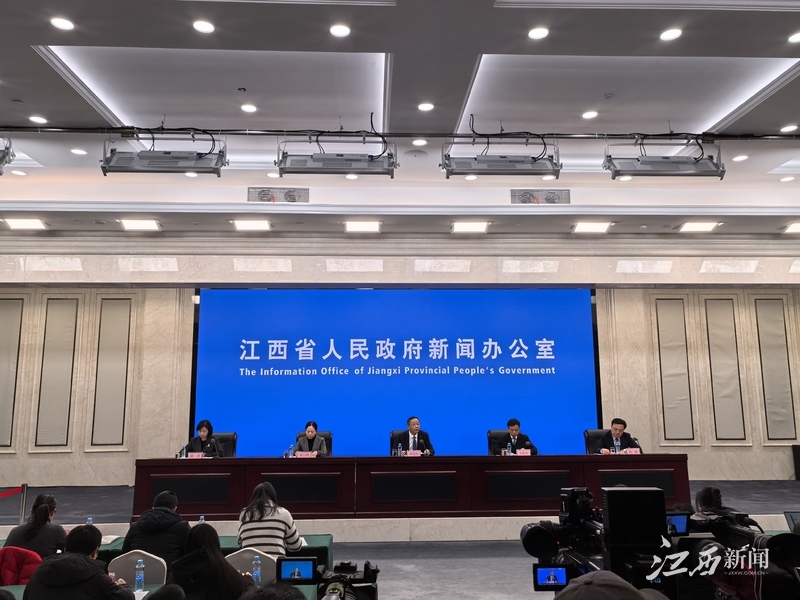Shanhui: The Internationalization Path With RMB Characteristics
Shanhui: The Internationalization Path With RMB Characteristics
Shanhui and Song Xinjia (Shanhui is the chief economist of Goldman Sachs China and the director of the China Chief Economist Forum) The RMB still has a low share in the global financial field, which is in sharp contrast to China's current important position in the global economy and trade.
Shanhui and Song Xinjia (Shanhui is the Chief Economist of Goldman Sachs China and the Director of the China Chief Economist Forum)
The RMB's share in the global financial field is still relatively low, in sharp contrast to China's current important position in the global economy and trade. If China can continue to develop its economy, avoid crises, expand RMB-denominated assets that foreign capital is easy to participate in and build market confidence, then the RMB's share in official reserves may significantly exceed the current 2% share. To explore the path of internationalization, China may significantly expand and liberalize the offshore market (CNH), while keeping the onshore market (CNY) basically unchanged, and foreign direct investment (FDI) plays a greater role in the internationalization process of the RMB.
Since 2000, China's GDP share in the total global GDP has increased from 6% to 19%, an increase of 13 percentage points. In the field of international trade, China has surpassed the United States and has become the largest contributor to the global trade flow of goods. China accounts for 17% of the global population, while it accounts for 33% of the global manufacturing value added. For more than 140 countries, China is a larger trading partner than the United States.
China has been promoting the internationalization of the RMB since 2009, and today fifteen years later, progress is still limited. Many indicators show that the international use of the RMB is less than half of the pound, which is far from the US dollar. In short, China's leading role in the global economic and trade stage is becoming increasingly obvious. In contrast, the proportion of RMB use in international financial activities and official reserves is still at a low level.
In addition to the global economic background, the global geopolitical landscape has also changed in recent years. After the Russian-Ukraine War in 2022, the willingness of emerging market central banks to diversify their assets has increased. Although it is still in its early stages, the demand for asset diversification in emerging market countries is expected to open the door for the accelerated internationalization of the RMB in the next few years.
The decisive factors of foreign exchange reserve currency
Although some believe that the major structural shifts in the international monetary system over the past few decades and the intensified geopolitical and trade tensions will rewrite the global monetary order, the US dollar remains dominant. A large number of academic research has identified several key decisive factors when the central bank chooses foreign reserve currencies, including inertia, economic scale, financial market depth, monetary credit, and increasingly important geopolitical considerations in recent times.
To quantify the importance of these factors, we constructed a panel regression model for the four major currencies (USD, Euro, Japanese yen, and British pound) from 1986 to 2022, which revealed three rules:
First, reserve currencies often show strong inertia. The model shows that within a single year, the adjustments to the long-term stable level were less than 10%. This means that changes in reserve composition are very slow, and that minor changes in other decisive factors are unlikely to trigger corresponding changes in reserve holdings, at least in the short term. This inertial preference has historically been reflected in the fact that the pound has been dominant for a long time after the US economy surpassed the UK for decades, and this force is now conducive to the US dollar's continued core position.
Secondly, after inertia, the relative size of the economy seems to be the most important determinant of monetary reserve share. The marginal impact of the increase in GDP share on reserve shares will vary depending on the starting point of the currency issuing countries. This means that there may be a critical point phenomenon. As challenge currency usage approaches dominant currencies, further increase in GDP share may lead to a disproportionately significant increase in reserve shares, or a rapid shift in global currency dominance.
Third, deterioration in monetary credit (using the accelerated change in the ratio of public debt to GDP as the proxy variable) will have a negative impact on reserve shares. This means that confidence in the long-term stability of the economy's currency may be threatened by increased public debt. The high fiscal deficit in the United States, coupled with the already high public debt-to-GDP ratio and high interest rates, has caused market participants to worry about the sustainability of US debt.
In addition to traditional economic factors, geopolitical and geoeconomic differentiation has also increased its influence on central bank reserve allocation decisions. For countries such as China, Brazil and Türkiye, reducing the dependence of the dollar has become a clear goal. Recent geopolitical tensions, especially given the push of U.S. tariffs and the Russian-Ukraine war, have made geopolitical factors increasingly likely to change the composition of reserves. Our review of major academic research unanimously reflects that geopolitical factors affect the composition of reserve currency share.
Three revelations of the pound giving way to the dollar
The change in currency dominance is rare, and the only example in the past 150 years is the pound giving way to the US dollar. However, a large amount of academic research on dominating the internationalization of currencies and currencies provides three important revelations.
First, it takes a long time to become the dominant currency. As early as the 1870s, the US economy had surpassed the UK, and in 1915, the US exports exceeded the UK, but it was not until the 1850s that the US dollar truly established its dominant position.
Second, the policies and actions of challenge countries and existing dominant countries are related to the rise and fall of international use of currency. et al.'s 2017 study showed that the Federal Reserve Act of 1913 allowed U.S. banks to open branches overseas and conduct trade credit instruments business, thus greatly strengthening the role of the US dollar in the fields of international trade and finance. On the other hand, World War I accelerated the end of the pound era.
Third, major recessions and severe economic downturns may delay or even hinder the process of internationalization of currency. The Great Depression in the late 1920s and early 1930s forced the US dollar to temporarily give back its dominant currency to the British pound. In the 1990s and early 21st century, the yen's share of central banks' reserves fell after the bursting of the Japanese asset bubble and the stagnation of the economy. The European sovereign debt crisis in the 1910s dragged down the euro's international status.
To sum up, if China can continue to develop its economy, avoid financial crises, promote the application of RMB in trade denomination/financing, and expand RMB-denominated assets that foreign capital is easy to participate in, then RMB may play a more important role on the global stage. Admittedly, the US dollar will remain the dominant reserve currency for many years to come. But maintaining dominance does not mean that the dollar's share in global trade and finance will remain unchanged. From 1990 to 2025, while the dollar's dominance in official reserves is undisputed, its share swings between less than 40% and more than 60%. If China can build market confidence as it continues to develop its economy, the RMB's share in its official reserves may significantly exceed the current 2%.
Internationalization path with RMB characteristics
The efforts to internationalize the RMB follow the traditional path in many ways. For example, China's trade share settled in RMB continues to rise. SWIFT data shows that the RMB's share in global trade financing has steadily increased. These trends are consistent with the international use of currencies that usually start with the normal pattern of trade settlement, trade valuation and trade financing. It should be noted that due to the intensification of trade frictions between China and the United States and the European Union, China has mainly strengthened its trade ties with emerging economies.
The internationalization of the RMB may also be unique. First, in the efforts to internationalize the RMB, China may want to focus on expanding the offshore market (CNH) while keeping the onshore market (CNY) relatively unchanged. The size of the onshore market is several orders of magnitude larger than the offshore market, but domestic investors lack the allocation of foreign assets. The huge onshore market size and potential capital outflow pressure make it difficult for relatively cautious decision-makers to easily relax cross-border capital flows. Therefore, the offshore market may become the main stage for promoting the internationalization of the RMB. In fact, the issuance of dim sum bonds has also been increasing.
Secondly, although other reserve currencies play a more important role in global securities investment, the internationalization of the RMB may play more in the field of foreign direct investment. In addition, China has a large current account surplus. Considering China's extremely competitive manufacturing industry and the government's emphasis on and support for high-end manufacturing, China's trade surplus is likely to continue and partially translated into foreign investment, especially direct investment in countries in the Belt and Road.
Becoming a reserve currency also means that China may have to bear the costs it is unwilling to bear, including the possibility of a significant appreciation of the RMB. On the other hand, factors such as the 2018-19 trade war, the U.S. export controls on semiconductors and other high-tech products and services to China, and President Trump's additional tariffs on Chinese goods during his second term have strengthened China's determination to reduce its dependence on the U.S. and prevent the U.S. from restricting China's access to the U.S. dollar system. The Chinese government's efforts in this regard include the development of the RMB Cross-border Payment System (CIPS) to support RMB transaction settlement and clearing, and the development of RMB-denominated commodity trading (e.g., crude oil futures from the Shanghai International Energy Exchange Center). From China's perspective, the internationalization of the RMB will help reshape the global monetary order and ensure the security of China's financial system, so it has important national security significance.
The old and new challenges coexist
China's increasingly powerful manufacturing strength and current global geopolitical changes have brought new opportunities to the internationalization of the RMB; but this process also has major challenges. A long-standing challenge is how China's decision-makers balance maintaining financial market stability with foreign investors' demands for open and transparent financial markets. We believe that focusing on developing the offshore market while maintaining the onshore market basically unchanged is a feasible solution. But difficulties still exist, especially when the US dollar appreciates sharply and the RMB is facing pressure of depreciation and the decision-makers hope to keep the dollar-to-yuan exchange rate stable. In this case, it is still unknown to what extent the spread between the offshore RMB and the onshore RMB will be approved for expansion.
New technologies and financial innovations like stablecoins also present challenges to decision-makers. On the one hand, stablecoin trading has raised questions about whether regulators can track individual transactions and whether commercial banks face financial disintermediation risks, but at the same time, the bill passed by the United States may increase the global use of US dollar stablecoins. The rapid discussion and development of stablecoins have increased the urgency of China's decision-makers to come up with alternative strategies, and stablecoins denominated in offshore RMB may solve some problems. However, there are still many questions to be answered, such as who is the issuing entity of this RMB-denominated stablecoin, what risks may be brought, and how to effectively track and regulate participating entities and transactions, especially when the government attaches great importance to financial risks.





